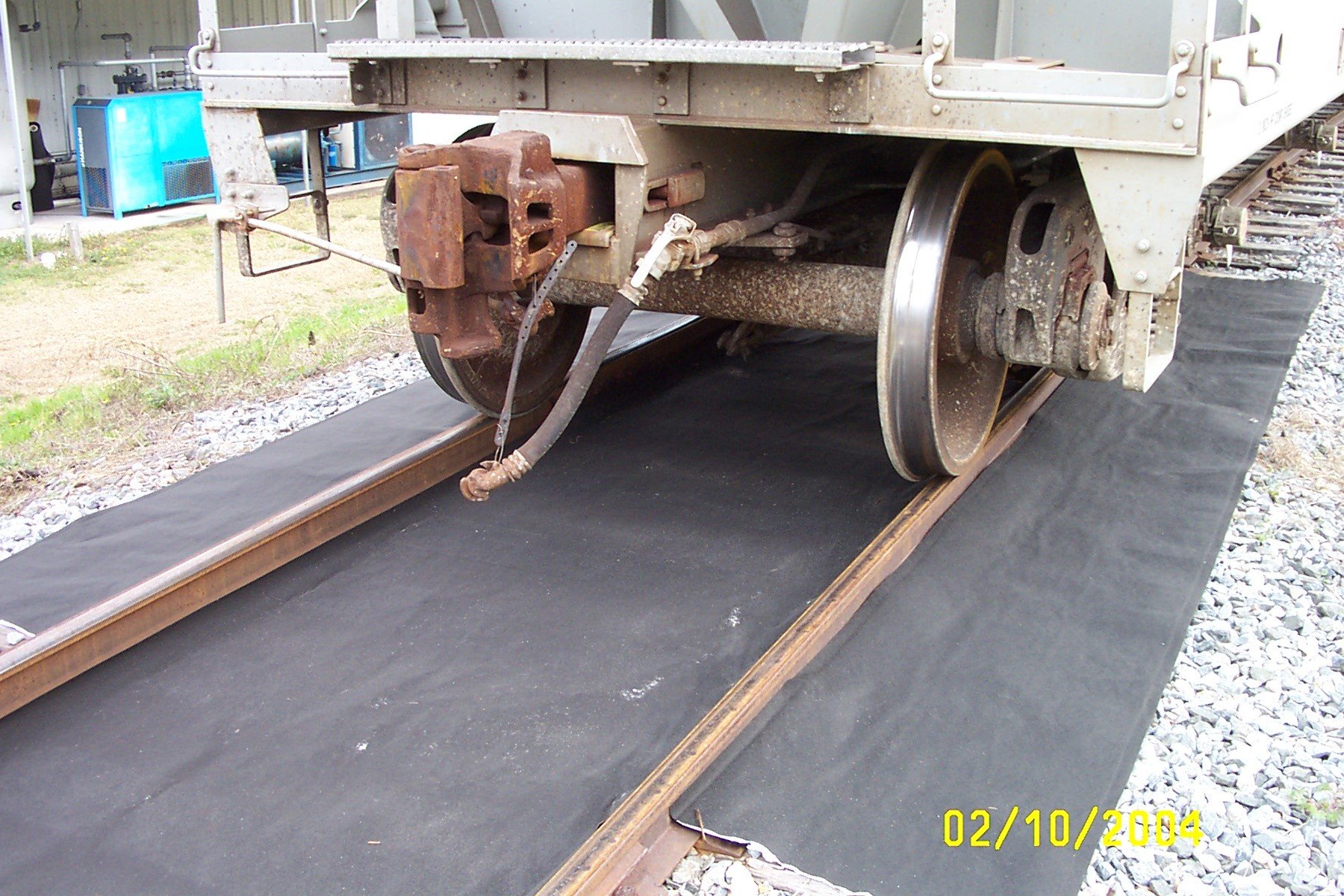
|
|||||||||||||||||||||||||||||||||||||||||||||||||||||||||||||||||
| |
Railroad
Track Mats |
|
|||||||||||||||||||||||||||||||||||||||||||||||||||||||||||||||
| Railroad Track Mats are Spill Containment mats that are placed between and along side of the rails for preventing oil spills from railroad cars and other equipment from fouling the earth, which would require substantial expenditures in clean up. Railroad Track Mats absorb oil only and will not absorb water. They are constructed with a durable UV resistant cover-stock and an impenetrable barrier backing on the bottom to keep liquids from leaking through mat. They are ideal for use under leaky equipment and vehicles for preventing oil spills from migrating. Railroad Track Mats are designed to meet the demanding conditions encountered along the rails. There is no way of knowing just how long Railroad Track Mats will last while in service even though the product is designed to be used in all types of weather and to stand up to hundreds of hours of direct exposure to UV rays without breaking down. However, when trying to determine the relative value of Railroad Track Mats and whether it is worth investing in their use or not, one must weigh the relatively moderate costs of Railroad Track Mats compared to the vast amounts of time, energy, work hours and financial resources required to cleanse the earth that has been fouled by grease and oil leaking from railroad equipment. Railroad Track Mats are, by far, the better way to go. Railroad Track Mats is available in the following formulation: Big Boss Railroad Track Mats are filled with a specially treated natural fiber cellular cotton, which makes it averse to the absorption of water and more oil absorbent than other previous formulations. It is equipped with a supporting needle felt to aid in absorbing and to add strength to the over all product and features a poly backing, which is chemically resistant to keep oils, fuel, and solvents from getting into the ground. Railroad Track Mats are available in single-roll units of 59" width for use between the rails and in pairs of 19" wide units for use along the outside rail areas. There are those who use roofing nails to secure the mats to the wooden railroad ties to help them hold their ground in the event of strong winds. Most often such measures are not required. |
|||||||||||||||||||||||||||||||||||||||||||||||||||||||||||||||||
| Material Safety Data Sheet: Click HERE Guidelines for Reproducing Weathering Effects on Nonmetallic Materials: Click HERE |
|||||||||||||||||||||||||||||||||||||||||||||||||||||||||||||||||
|
Price Chart:
|
|||||||||||||||||||||||||||||||||||||||||||||||||||||||||||||||||
|
|
|||||||||||||||||||||||||||||||||||||||||||||||||||||||||||||||||
|
|
|||||||||||||||||||||||||||||||||||||||||||||||||||||||||||||||||
|
|
|||||||||||||||||||||||||||||||||||||||||||||||||||||||||||||||||
|
|
|||||||||||||||||||||||||||||||||||||||||||||||||||||||||||||||||


